- Useful Links
Research
Overall theme: Improving performance limits of novel material systems
In order to meet 21st Century challenges, we need to design and manufacture novel materials that are strong, light weight, durable and multifunctional. Despite significant breakthroughs in recent decades, materials fail at 1/10th or less of their intrinsic limits. This failure of materials is the principle bottleneck for developing future energy, healthcare, aerospace and automotive technologies.
However the above materials design process is based on extensive laboratory testing, which can often become time-consuming and expensive. Computational Materials Engineering (CME) can bridge this gap by developing a more fundamental understanding of the failure mechanisms in these materials and pave way for further improvements. CME permits controlled experimentation on computers and assists in designing novel materials. We employ a combination of well established and newly developed CME techniques to investigate following research problems:Atomistic modeling of nano-scale fracture and failure
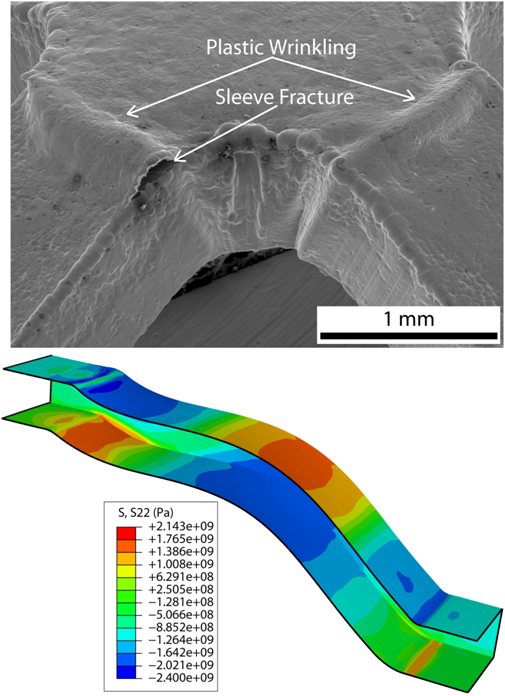 Our lab uses a combination of modern atomistic modeling techniques (Molecular Dynamics, Density Functional Theory) to develop a more fundamental understanding of the deformation and failure mechanisms in a variety of new-age materials such as graphene, nano-composites, nuclear and energy storage materials.
Our lab uses a combination of modern atomistic modeling techniques (Molecular Dynamics, Density Functional Theory) to develop a more fundamental understanding of the deformation and failure mechanisms in a variety of new-age materials such as graphene, nano-composites, nuclear and energy storage materials.
One exciting project we are working on is on performance improvements in hybrid nanocrystalline microtruss materials with an optimum blend of strength and ductility while maintaing a light weight advantage. This work, in collaboration with Prof. Hibbard's experimental group, aims to deliver significant improvements in the performance characteristics of this novel hybrid material design. To realize the full potential of the proposed material systems, their failure characteristics need to be properly established. Experimental observations (see accompanying pictures) suggest that a complex set of mechanisms such as inelastic buckling, nanocrystalline sleeve fracture, and plastic wrinkling cause material failure at multiply connected length and time scales. In this project, we are developing a fundamental understanding of failure mechanisms at the atomic-scale and connect it to the macro-scale through a multiscale modeling approach. We will then validate our computational models with the experimental data and propose novel material designs.
Computer aided development of next-generation hydrogen production and storage materials
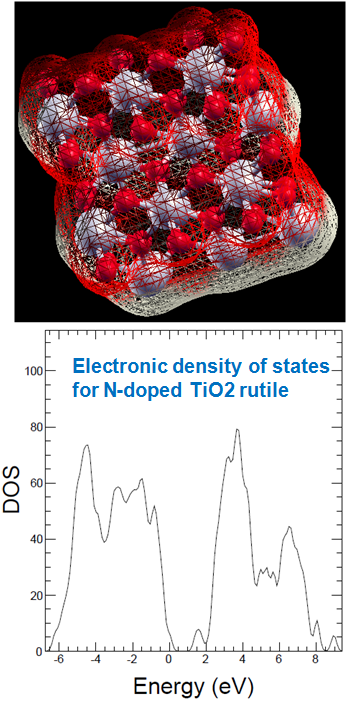 Hydrogen energy is a key enabling technology for the security of our future energy sustainability. By employing modern electron structure calculation techniques, our team tries to design and develop novel nano-structured materials and devices to enable cost-effective means of large-scale hydrogen production and efficient hydrogen storage. In near future, we also plan to look at batteries and fuel cell designs for transportation industry.
Hydrogen energy is a key enabling technology for the security of our future energy sustainability. By employing modern electron structure calculation techniques, our team tries to design and develop novel nano-structured materials and devices to enable cost-effective means of large-scale hydrogen production and efficient hydrogen storage. In near future, we also plan to look at batteries and fuel cell designs for transportation industry.
a. Design of efficient photocatalyst for hydrogen production: In this project, our team is finding ways to modify TiO2 to achieve efficient photocatalysis properties in the visible range. Both surface modification and doping methods are being explored.
b. Graphene oxide framework (GOF) materials for efficient hydrogen storage:In past few decades, hydrogen has emerged as a clean fuel for the future transportation and energy needs. Hydrogen storage can also help provide electricity at times of peak demand so as to offshoot the vulnerability of a solar and wind based energy infrastructure. We are exploring graphene based materials for achieving the US DOE target of >6.5% hydrogen storage.
Improving strength and fracture properties of nano-composites used in tissue engineering through atomistic based multiscale modeling
Tissue damage due to congenital diseases, accidents and end-stage organ failures affects millions of people worldwide. Fortunately, it is now possible to engineer tissues in vitro that can specifically meet the needs of individual patients. Carbon nanotubes blended with Chitosan show significant improvement in mechanical properties such as stiffness and hardness. However, their interfacial strength and fracture toughness properties fall below expectations. By investigating failure characteristics, we develop a route for improving structural properties of these materials.

Designing ultra-strong alloys by nanostructuring
The strength of alloys comes from a variety of hardening mechanisms such as precipitation hardening, solid-solution hardening, grain boundary hardening etc. Until now, development of these alloys has been empirical in nature. By combining atomistic and continuum simulation approaches, we investigate different strength contributions and develop new alloys that have optimum strength and hardness characteristics.
Deformation mechanisms in metallic multilayers with modulated grain sizes
Nanostructured materials are well known for their high strengths, but unfortunately low ductility. We are actively engaged in research of metallic multilayer structures which possess nanocrystalline and coarse grained features. The aim of this research is to retain the ducility of coarse grained features, while maintaining gains in strength from grain refinement to the nanoscale. We employ experimental measurements paired with molecular dynamics simulations to understand the deformation mechanisms underpinning mechanical behaviour.
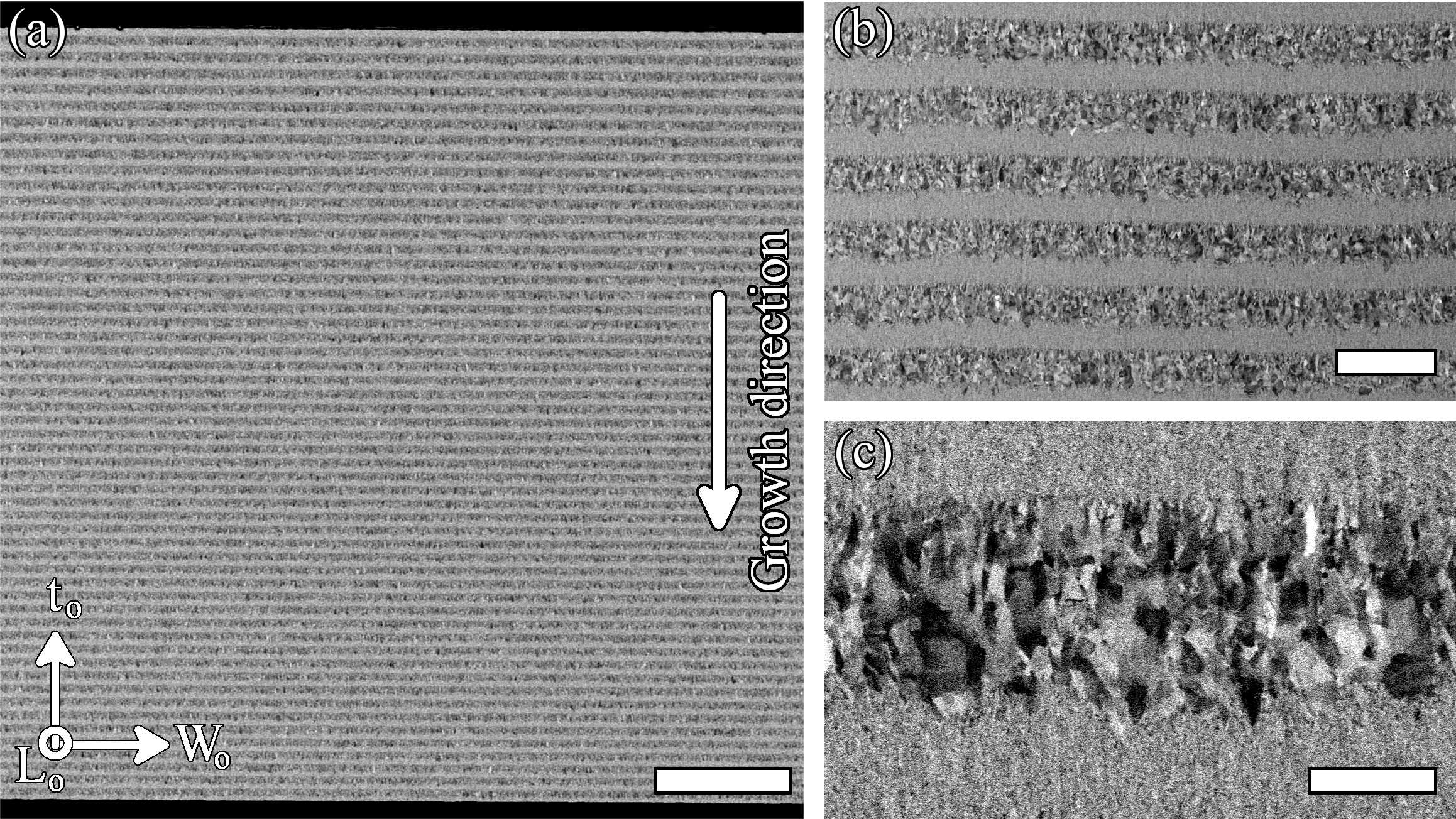
Mechanics of 2D materials
Our group is actively engaged in research regarding the mechanics of 2D materials such as graphene oxide. We currently employ a combination of experimental and computational approaches to understand the atomic origins of failure and the influence of novel 2D deformation mechanisms on measured properties.
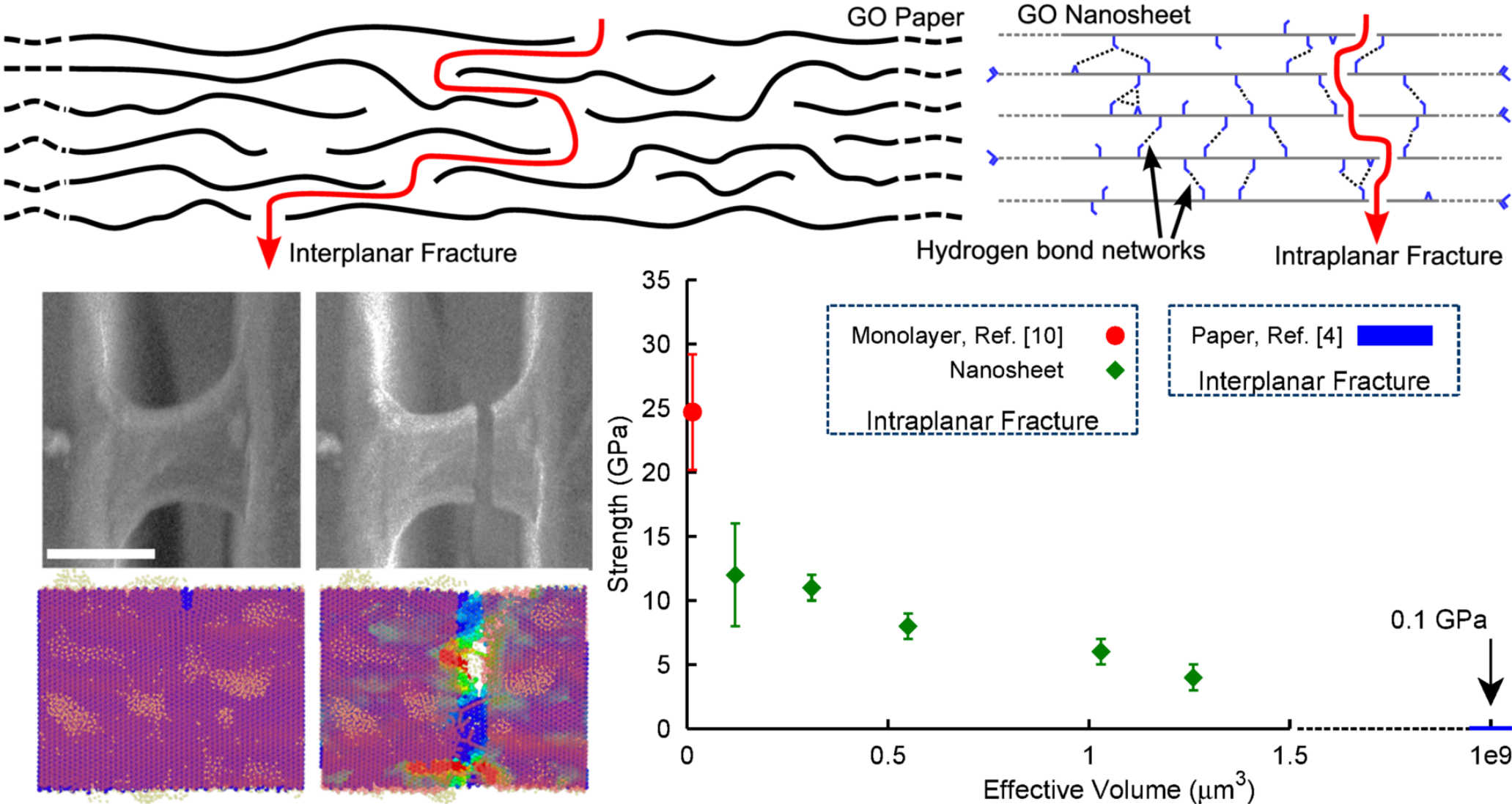
-
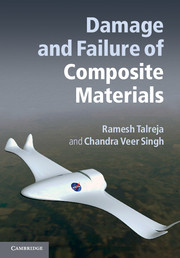 Damage and failure in composite materials
Damage and failure in composite materials
Composite materials are widely used in aerospace, automotive, civil, sports, and healthcare industries. However, their failure is quite complex to understand and analyze. The intricacies, experimetal and computational aspects of damage and failure in composite materials have been comrehensively elucidated in our damage mechanics book, just recently published by Cambridge University Press (co-authored with Prof. Ramesh Talreja, Texas A&M University). Click on the picture for more details on the book.
Our current research focus on this front is on the computational modeling of damage in wind turbine and multifunctional composites. We also work on improving and developing new damage models for composites in these applications.